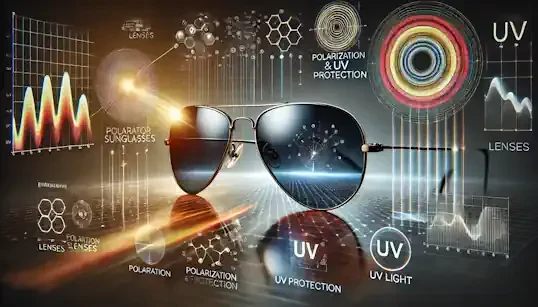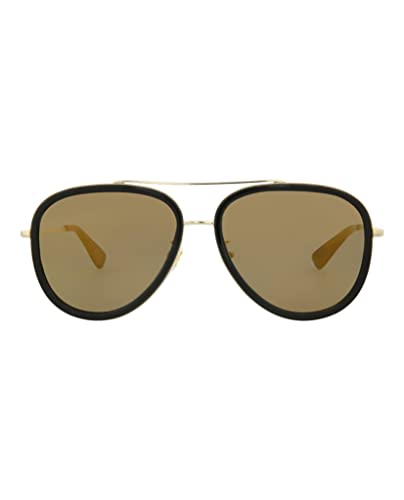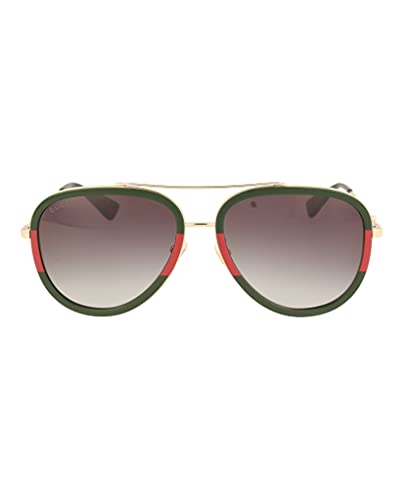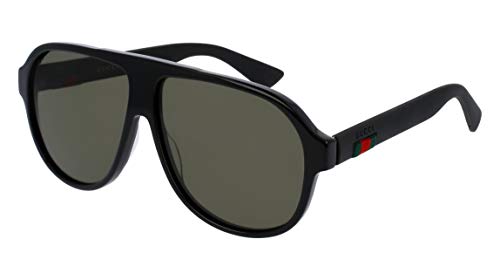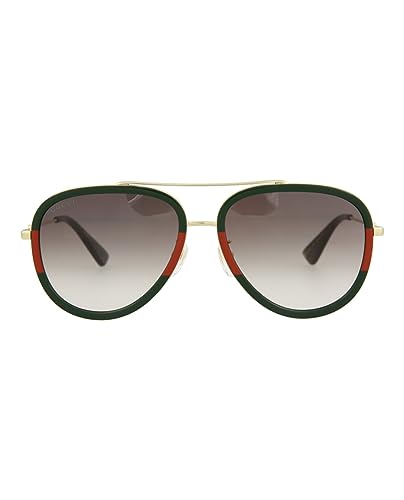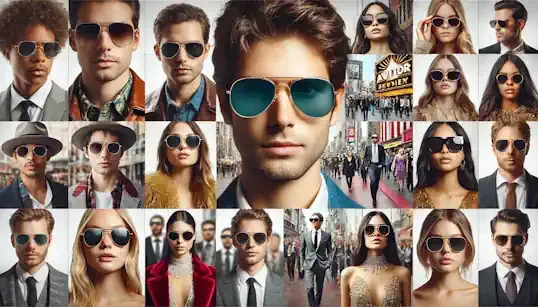Aviator sunglasses, instantly recognizable, effortlessly cool, and undeniably stylish. The very silhouette, with its iconic teardrop shape and sleek frames, conjures images of adventure, confidence, and a timeless sense of chic. They grace the faces of movie stars and everyday individuals alike, effortlessly elevating any outfit with a touch of classic appeal. But beyond the instantly recognizable shape and the undeniable style quotient of aviator sunglasses, lies the true, often unsung hero of these eyewear classics: the lens itself. While the frame may capture the eye and define the overall aesthetic, it is the lens that truly performs the essential task, the silent guardian of your vision and eye health. Indeed, while style is paramount in the world of fashion, and aviator sunglasses certainly deliver on that front, the lenses in your aviator sunglasses are far more than just tinted plastic or glass, simply darkening your view for comfort in bright light. They are, in reality, sophisticated pieces of optical technology, meticulously engineered and designed to protect your vision, enhance your visual experience, and ensure your eyes remain healthy and comfortable, even in the most demanding and intensely illuminated environments. This article will take a journey beneath the surface of the aviator’s stylish exterior, to decode the often-misunderstood world of sunglass lens technology. We will specifically focus on two crucial features that are essential for any quality pair of sunglasses, but particularly vital for aviator lenses, given their historical roots in demanding visual environments: polarization and UV protection. We’ll delve into the science behind these technologies, explaining what polarization and UV protection truly are, how they function within the lenses of your aviator sunglasses, and, most importantly, exploring in detail why they truly matter for the health of your eyes and the clarity of your vision in the bright and often challenging world we navigate every day. Prepare to become an informed consumer, armed with the knowledge to navigate the often-confusing world of sunglass lens specifications. By understanding the essential lens features to look for when choosing your next, or perhaps your first, pair of aviator sunglasses, you can ensure that you’re not just achieving that iconic, effortlessly cool look, but also, and perhaps more importantly, actively seeing clearly, experiencing enhanced visual comfort, and diligently protecting your precious eyesight for years to come.
The most basic function of any sunglass lens is, undeniably, to reduce overall brightness. Stepping out into bright sunlight without sunglasses often leads to squinting, discomfort, and a general sense of visual overload. Sunglasses, with their tinted lenses, effectively act as a dimmer switch for your vision, reducing the intensity of light reaching your eyes, making things more comfortable and allowing you to see more clearly in bright conditions. But simply dimming the light, merely reducing the overall intensity of what you see, is only scratching the surface of what truly effective sunglass lenses can, and indeed should do. Relying solely on basic tinting for sunglasses is akin to only addressing the most superficial aspect of sun protection. While reduced brightness is certainly a welcome relief on a sunny day, it fails to tackle other significant visual challenges and, crucially, leaves your eyes vulnerable to invisible but damaging threats. To truly protect your eyes and optimize your visual experience in bright conditions, especially in the diverse and often demanding environments where aviator sunglasses historically excelled – and continue to be relevant today – you need to understand and appreciate the power of specialized lens technologies that go far beyond simple tint. These advanced technologies elevate sunglasses from mere comfort accessories to essential tools for both visual acuity and, more fundamentally, long-term eye health. Among these advanced technologies, polarization and UV protection stand out as the “dynamic duo” of lens innovation. These two features, often working in concert, provide a comprehensive approach to eyewear, addressing both the immediate visual discomfort of glare and the long-term risks associated with invisible ultraviolet radiation. Polarization tackles the distracting, often vision-impairing, and sometimes even dangerous issue of glare, which bounces off reflective surfaces and can significantly impede clear sight. UV protection, in contrast, shields your eyes from the insidious threat of invisible but harmful ultraviolet radiation emitted by the sun. Together, polarization and UV protection elevate aviator sunglasses, and indeed any quality sunglasses, from mere fashion accessories to vital tools for maintaining eye health and ensuring optimal visual performance in a wide range of environments and activities. Understanding these technologies is not just about being a savvy consumer; it’s about making informed choices that directly impact your vision, your comfort, and the long-term well-being of your eyes.
Let's first delve into the fascinating science and practical benefits of polarization, a lens technology specifically designed to combat the pervasive problem of glare and unlock clearer, more comfortable vision, particularly in environments rich with reflective surfaces. To truly appreciate the power of polarized lenses, we must first understand what glare is and why it poses such a significant challenge to our vision. Glare, in the context of sunglasses, refers specifically to horizontally polarized light waves. Sunlight, in its natural state, vibrates in all directions. However, when sunlight strikes a flat, reflective surface such as water, snow, roads, car hoods, or even wet pavement, the light waves become polarized, meaning they are largely reflected back in a horizontal direction. It is this horizontally polarized light, this concentrated and organized reflection, that we perceive as glare. This glare, far from being just a minor annoyance, actively reduces visibility and causes significant visual discomfort. It acts as a visual noise, scattering light and washing out colors, making it difficult to discern details, judge distances, and perceive true contrasts. Glare forces our eyes to work harder, straining to filter out the distracting reflections and focus on the actual objects we are trying to see. This constant effort leads to eye strain, fatigue, and even headaches, particularly during prolonged exposure to bright, reflective environments. Think of the experience of driving directly towards the setting or rising sun. The glare bouncing off the road surface, the hood of your car, and the windshield can be blinding, making it difficult to see traffic signals, lane markings, or other vehicles, significantly compromising driving safety and comfort. Or imagine trying to enjoy a serene day by the water, only to have the shimmering, intensely bright reflections off the lake’s surface obscure your view, preventing you from seeing clearly beneath the water and causing you to constantly squint and shield your eyes. This is the power of glare, and it’s more than just an aesthetic inconvenience; it actively hinders your vision, reduces your visual comfort, and can even pose safety risks in certain situations.
This is where the ingenious technology of polarized lenses steps in, offering a highly effective solution to combat glare and restore visual clarity in reflective environments. Polarized lenses are designed with a special, vertically oriented filter embedded within the lens material. To understand how this filter works, imagine Venetian blinds or a picket fence. These structures have vertical slats that allow light to pass through vertically, but block light coming in horizontally. Similarly, the vertical filter in polarized lenses acts like these slats, strategically blocking horizontally polarized light waves – the very waves that constitute glare – while allowing vertically oriented light to pass through relatively unimpeded. By selectively filtering out the horizontal light, polarized lenses effectively “cut through” the glare, significantly reducing the intensity of reflections from those horizontal surfaces. This selective filtering is the key to their glare-reducing power. They don't simply dim all light equally, like a standard tinted lens; they specifically target and eliminate the disruptive horizontally polarized light that causes glare, while preserving the useful vertically oriented light that carries visual information about the objects we are trying to see. The result is a dramatic improvement in visual clarity and comfort in glare-prone environments.
The benefits of polarization extend far beyond simply reducing glare; they unlock a range of visual enhancements that contribute to a more comfortable, clearer, and even richer visual experience. Firstly, and most directly, polarized lenses achieve a significant and noticeable reduction in glare. This is their primary function, and they excel at it. The elimination of blinding reflections from surfaces like water, snow, roads, and metallic objects dramatically improves visibility in these challenging conditions, allowing you to see clearly and comfortably where standard sunglasses would leave you squinting and straining. Secondly, and as a direct consequence of glare reduction, polarized lenses enhance overall visual clarity and acuity. By cutting through the visual noise of glare, polarized lenses sharpen your vision, making details more easily discernible and enhancing the sharpness of edges and contours, particularly in bright, reflective conditions. This improved clarity is especially noticeable when viewing objects in or around water or snow, where glare often obscures subtle details. Thirdly, polarized lenses can demonstrably improve color perception and contrast. Glare often “washes out” colors, making them appear muted and less vibrant. By reducing this washout effect, polarized lenses allow you to perceive colors with greater richness, saturation, and accuracy. Contrast is also enhanced, making objects stand out more distinctly against their backgrounds, further improving visual definition and detail. Finally, and perhaps most importantly for long-term visual comfort, polarized lenses contribute to reduced eye strain and fatigue. By minimizing the visual noise of glare, polarized lenses reduce the amount of effort your eyes need to exert to process visual information. This reduced visual effort translates directly into less eye strain, less fatigue, and a more relaxed and comfortable visual experience, especially during prolonged outdoor exposure or extended periods of driving in sunny conditions.
Polarized aviator lenses are not just a stylish choice; they are a particularly practical and beneficial choice in a wide range of specific activities and situations where glare is a pervasive visual challenge. For driving, polarized lenses are an invaluable asset, significantly enhancing safety and comfort. They drastically reduce glare bouncing off the road surface, the hood of your car, and the windshields of other vehicles, making it easier to see lane markings, traffic signals, and other cars, especially during sunrise and sunset when glare is often at its peak. For those who enjoy water sports such as boating, fishing, kayaking, or paddleboarding, polarized lenses are nothing short of transformative. They virtually eliminate glare from the water’s surface, allowing you to see clearly into the water, spot fish, navigate more effectively, and enjoy the aquatic environment with dramatically improved visual clarity and comfort. In snow sports, such as skiing, snowboarding, or snowshoeing, polarized lenses are equally essential. They cut through the blinding glare reflected off snow and ice, improving depth perception, enhancing visibility of terrain contours, and reducing eye strain in the intensely reflective snowy landscape, making winter sports safer and more enjoyable. Beyond these specific activities, polarized aviator lenses are beneficial for general outdoor activities whenever and wherever glare is a concern. Whether you are hiking in sun-drenched mountains, biking along a reflective road, or simply enjoying outdoor photography in bright sunlight, polarized lenses enhance visual clarity, reduce eye strain, and improve overall visual comfort, making them a valuable asset for anyone who spends time outdoors in sunny conditions.
A quick, practical tip to ensure your aviator sunglasses, or any sunglasses for that matter, are indeed polarized is to perform a simple at-home test. Hold your sunglasses in front of an LCD screen, such as a computer monitor, smartphone, or digital watch. While looking through one lens, slowly rotate the sunglasses ninety degrees. If the lenses are polarized, you will notice that at a certain angle of rotation, the screen will appear to darken significantly, sometimes even to the point of becoming almost completely black. This darkening effect is a clear indication that the lenses are effectively blocking polarized light. If you rotate the sunglasses and the screen’s brightness remains relatively unchanged, it is highly likely that the lenses are not polarized, and therefore will not offer the glare-reducing benefits described above. This simple test can be a valuable tool when purchasing sunglasses, allowing you to quickly verify whether or not they possess this important lens technology and ensuring you are getting the glare-reducing performance you expect and deserve.
Now, let’s turn our attention to the second crucial lens technology: UV protection, a feature that goes beyond visual comfort and directly addresses the long-term health of your eyes by shielding them from the insidious danger of ultraviolet radiation. To understand the importance of UV protection in sunglasses, we must first understand what UV radiation is and why it poses such a threat to eye health. UV radiation, or ultraviolet radiation, is a form of electromagnetic radiation emitted by the sun. It is categorized into UVA, UVB, and UVC wavelengths. While UVC radiation is largely absorbed by the Earth’s atmosphere and poses minimal risk at ground level, UVA and UVB radiation are both present in sunlight and can penetrate the atmosphere, reaching our eyes and skin. The crucial point to understand is that UV radiation is invisible. Unlike visible light, we cannot see, smell, or feel UV radiation directly. This invisibility makes it a particularly insidious threat; we are often unaware of the cumulative exposure our eyes are receiving when we are outdoors. It’s important to note that UV radiation is present even on cloudy days. While clouds can block some visible sunlight, they often do not effectively block UV radiation, meaning your eyes can still be exposed to harmful UV rays even when the sky appears overcast. Unlike glare, which is a visible annoyance that signals a visual problem, UV radiation is silent and insidious. You don't see it, you don't feel it immediately, but it is constantly bombarding your eyes whenever you are outdoors, even on seemingly less sunny or overcast days, accumulating its damaging effects over time.
Why is this invisible UV radiation so harmful to our eyes? Exposure to UV radiation, both UVA and UVB, can cause a range of damage to various parts of the eye, both in the short-term and, more worryingly, in the long-term. In the short-term, intense, acute exposure to UVB radiation, for example, during prolonged sun exposure without eye protection, can lead to photokeratitis, commonly known as “sunburn of the cornea,” “snow blindness,” or “welder’s flash.” This condition is essentially a sunburn of the clear front surface of the eye, the cornea. It is intensely painful, causing a gritty sensation, redness, blurred vision, and extreme light sensitivity. While photokeratitis is typically temporary and resolves within a few days, it is a painful and unpleasant experience, serving as a clear warning of the damaging potential of UV radiation. However, the more significant concern lies in the long-term, cumulative effects of UV exposure on eye health. Chronic, repeated exposure to UV radiation over years and decades can significantly increase the risk of developing serious, vision-threatening eye diseases. One of the most prevalent long-term risks is cataracts, the clouding of the eye’s natural lens, which progressively impairs vision and is a leading cause of blindness worldwide. UV radiation is a major contributing factor to the development of cataracts. Macular degeneration, another serious and irreversible eye disease that damages the retina and leads to central vision loss, is also linked to cumulative UV exposure. Pterygium, a benign but often bothersome tissue growth on the conjunctiva, the clear membrane covering the white part of the eye, is another condition associated with chronic sun exposure and UV radiation. Furthermore, UV radiation exposure also increases the risk of skin cancer around the eyelids, a particularly sensitive area often overlooked when applying sunscreen. The cumulative effect of UV exposure over a lifetime is significant and undeniable. The damage is often gradual and insidious, accumulating over years before manifesting as serious eye conditions. This is why preventative measures, starting from a young age, are so crucial for protecting long-term eye health, and why UV protection in sunglasses is not just a desirable feature, but an absolute necessity.
Thankfully, quality sunglasses offer a highly effective shield against this invisible threat. The UV protection offered by sunglasses is not primarily achieved through lens tint or darkness, but rather through specialized UV-absorbing coatings or materials that are incorporated directly into the lens itself during the manufacturing process. These coatings and materials, often invisible to the naked eye and not necessarily correlated to lens darkness or color, act as a dedicated barrier, specifically designed to absorb and block harmful UV radiation before it can reach the eyes. This UV-blocking shield is distinct from the tint that reduces visible light; it is a separate layer of optical technology focused solely on intercepting and neutralizing ultraviolet rays. It is crucial to understand that both clear lenses and darkly tinted lenses can offer excellent UV protection, if they have been treated with these specialized UV-blocking technologies. Conversely, darkly tinted lenses without proper UV protection are not only ineffective at shielding your eyes from UV radiation, but can actually be more harmful than wearing no sunglasses at all. This is because dark lenses, even without UV protection, cause your pupils to dilate, opening wider to allow more light to enter the eye. If these dark lenses lack UV-blocking properties, this pupil dilation inadvertently allows more harmful UV radiation to enter the eye than if you were wearing no sunglasses at all, creating a false sense of protection while actually increasing your exposure to invisible UV damage.
To ensure you are getting genuine and reliable UV protection from your aviator sunglasses, or any sunglasses you purchase, the key is to look for specific labels and choose reputable brands. The “UV400” or “100% UV Protection” label is the gold standard, the benchmark of effective UV shielding in sunglasses. This label indicates that the lenses have been rigorously tested and certified to block UV wavelengths up to 400 nanometers, effectively covering the entire spectrum of UVA and UVB radiation, providing comprehensive protection against these harmful rays. Always prioritize sunglasses that explicitly state “UV400” or “100% UV Protection” on their labels or product descriptions. Beyond labels, purchasing sunglasses from reputable brands and established retailers known for selling quality eyewear is also essential. Reputable brands are more likely to adhere to industry standards for UV protection and use certified lens materials and coatings. Be wary of extremely cheap, unbranded sunglasses, particularly those sold at temporary kiosks or by unverified vendors. These sunglasses may not have undergone proper testing or quality control and may offer little to no actual UV protection, despite potentially having dark lenses. If you are unsure about the UV protection of a particular pair of aviator sunglasses, especially if you have pre-existing eye conditions or are particularly concerned about UV exposure, consider consulting an eye care professional. An optometrist or ophthalmologist can provide personalized recommendations and advise on reputable brands and lens features that best meet your individual needs and ensure optimal eye health.
When choosing aviator sunglasses, particularly in the modern market with its vast array of lens options, it’s crucial to strike a balance between style and essential functionality. While the aesthetic appeal of aviator lenses – the tint, color, and mirrored or gradient finishes – undeniably contributes to the overall style of the sunglasses, it's vital to remember that lens function, specifically polarization and UV protection, should never be sacrificed for mere style points. The ideal pair of aviator sunglasses seamlessly integrates both style and substance, offering a look that is both fashionable and functional, protecting your eyes while enhancing your personal aesthetic. When considering lens choices, it’s helpful to contextualize them within the different scenarios where aviator sunglasses are commonly worn. For driving aviators, polarized lenses are not just recommended; they are highly advisable, significantly enhancing driving safety and comfort by drastically reducing glare from roads and other vehicles. Lens tints in neutral colors like grey or brown are often preferred for driving as they minimize color distortion while effectively reducing brightness and glare. For sport and outdoor aviators, polarization remains a valuable asset, particularly for water and snow sports where glare is intense. In addition, consider impact-resistant lens materials such as polycarbonate for added eye protection during active pursuits, guarding against potential impacts and debris. Lens tints may be chosen based on the specific sport or outdoor activity; for example, amber or rose tints can enhance contrast in variable light conditions, beneficial for activities like skiing or mountain biking. For everyday fashion aviators, UV protection is absolutely essential as a bare minimum requirement. Every pair of sunglasses intended for everyday wear outdoors should provide 100% UV protection. Polarization, while not strictly essential for all everyday scenarios, is a valuable added benefit for reducing glare in urban environments, from reflective buildings to wet pavement, and in general outdoor settings, enhancing visual comfort and clarity in your daily life. Lens tints and finishes for everyday fashion aviators can be chosen based on personal style preferences, allowing you to express your individuality and complement your wardrobe, as long as the fundamental requirement of UV protection is always prioritized.
It is important to dispel some common myths and misconceptions that often surround aviator sunglass lenses. One common misconception is that “all aviator lenses are automatically polarized.” This is simply not true. Polarization is an added feature, a specific lens technology that is not inherently built into the aviator style itself. While many high-quality aviator sunglasses do offer polarized lens options, it is not a given; always check the product specifications or labeling to confirm polarization if glare reduction is a priority. Another misconception is that “all aviator sunglasses are equally UV protective.” Again, this is false. UV protection is not determined by the style or shape of the frame, but rather by the specific lens coatings or materials used. UV protection levels can vary significantly between different brands and models of aviator sunglasses, and even between different lenses within the same brand’s aviator collection. Always check for the “UV400” or “100% UV Protection” label to ensure adequate UV shielding, regardless of the aviator style or brand. Finally, a persistent myth is that “darker lenses are always better.” As previously discussed, lens darkness has no direct correlation to UV protection, and excessively dark lenses without UV protection can be more harmful than beneficial. Darkness simply reduces visible light intensity, which can be comfortable in bright sun, but it does not block UV radiation. Prioritize UV protection over lens darkness alone; choose lenses that are appropriately tinted for comfort in bright light and offer certified UV400 protection.
Ultimately, making informed choices about aviator sunglass lenses comes down to prioritizing your individual needs, activities, and visual requirements. The “best” aviator lens choice is not universal; it depends on how and where you intend to use your sunglasses. Consider your primary use for aviator sunglasses. Will they be primarily for driving? For sports or outdoor adventures? Or mainly for everyday fashion and general sun protection? Once you understand your primary use case, prioritize lens features accordingly. For driving and water/snow sports, polarized lenses are highly recommended for glare reduction. For all outdoor use, UV protection is absolutely essential, regardless of the specific activity. For fashion-focused everyday wear, UV protection should be the baseline, with polarization being a highly desirable added benefit, and lens tints and finishes chosen to complement your personal style. Empower yourself as a consumer. Don't hesitate to ask questions about lens technology when purchasing aviator sunglasses. Check product labels and descriptions carefully for mentions of “polarization” and “UV400” or “100% UV Protection.” Choose reputable brands known for quality eyewear and lens technology. And when in doubt, consult an eye care professional for personalized recommendations and guidance. By taking an active and informed approach to lens selection, you can ensure that your aviator sunglasses not only enhance your style but also, and more importantly, safeguard your vision and contribute to long-term eye health.
In conclusion, while the iconic shape and timeless style of aviator sunglasses are undeniably captivating, it is the often-underappreciated lens technology that truly unlocks their full potential. The lenses are not merely tinted pieces of plastic or glass; they are sophisticated optical instruments capable of significantly enhancing visual clarity, reducing eye strain, and, crucially, protecting your eyes from harmful ultraviolet radiation. Understanding the power of polarization to cut through glare and the vital role of UV protection in safeguarding eye health is essential for any informed consumer of sunglasses, especially for those drawn to the classic and versatile style of aviators. By prioritizing lens technology alongside style considerations, you elevate aviator sunglasses from simple fashion accessories to powerful tools for both visual performance and essential protection for your eyes. Polarized lenses unlock a world of clearer, more comfortable vision in glare-prone environments, enhancing activities from driving and watersports to everyday outdoor pursuits. UV protection acts as an invisible shield against the insidious threat of harmful radiation, mitigating the risk of serious long-term eye diseases and safeguarding your precious eyesight for years to come. By making informed lens choices, by understanding the science and benefits of polarization and UV protection, you take control of your eye health and visual experience. Don't just choose aviator sunglasses for their iconic style; choose them for their lens technology, ensuring you see clearly, protect your eyes, and look fantastic, all at the same time. Your vision is priceless – protect it with informed, style-conscious choices.
